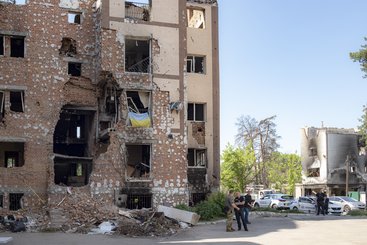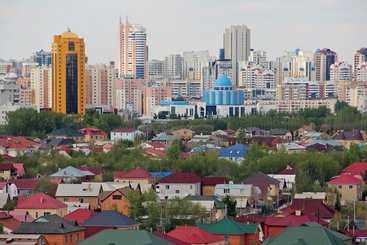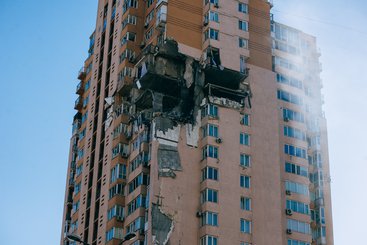In a recent article for the Economist, Ukrainian General Valery Zaluzhny, the Commander-in-Chief of its Armed Forces, argued that the Russia-Ukraine war has reached a stalemate and outlined what Ukraine needs to make substantive progress on the frontline. This intervention has raised significant speculation about rifts between Ukraine’s political and military leadership.
Such speculations come at a difficult time for Ukraine. Its allies are tightening budgets, while the looming election campaign in the US brings the prospect of another Trump presidency that may undermine the flow of financial and military assistance. Any escalation of conflict in the Middle East risks creating domestic political spillovers across Europe and in the US. These potential developments leave Ukraine concerned that its allies’ focus may shift towards other priorities.
Domestically, Ukraine is facing the dual prospects of another winter under Russian bombardment that will likely target its critical infrastructure and the need to maintain public and military morale in the face of a lingering war. In this context, speculation about rifts between the political and military establishment – whether true or not – exacerbate Ukraine’s political risks.
Zaluzhny outlines Ukraine’s military needs – and draws backlash from the President’s office
The war in Ukraine is transitioning to “positional” warfare of static and attritional fighting”. Zaluzhny’s analysis suggests that this will create risks to Ukraine’s Armed Forces and the state but also benefit Russia, providing it with time to rebuild its military. To move away from this “positional” warfare and progress on the frontline, Ukraine needs “[to] gain air superiority; breach mine barriers in depth; increase the effectiveness of counter-battery and electronic warfare; create and prepare the necessary reserves”. Russian minefields have proved difficult for Ukraine’s Armed Forces to penetrate and new technologies, such as radar-like sensors, will be crucial to breaching mined territories. Meanwhile, limited opportunities for training, rotation and legislative gaps, which mean that citizens eligible for conscription can evade it, are key issues around military personnel.
By highlighting the changing nature of the war – and the scale of Ukraine’s military technological needs and challenges – Zaluzhny’s sobering analysis dryly points to uncomfortable truth about the stalemate for both sides; and what it will take to break through. Putin wants to retain the territories already under occupation and has ramped up spending on the defence sector to a third of Russia’s 2024 budget. He is likely waiting for the US presidential election and diplomatic fallout from the escalating tensions in the Middle East to divert allies’ attention away from Ukraine. Meanwhile, having regained a substantial part of its territories in the northeastern and southern regions in late 2022, Ukraine has struggled to break through further into the occupied southern territories, which Russia has since heavily fortified.
In early 2023, Ukrainian government set high expectations for the country’s counteroffensive which have proved difficult to deliver. Zaluzhny’s article and interview avoided any criticism of Ukraine’s political leadership. Nonetheless, he was rebuked by the Deputy Head of the President’s Office who suggested that the publication is making the aggressors’ job easier and alleged concerns among Ukraine’s allies about Zaluzhny’s assessment. President Zelensky did not publicly take an issue with Zaluzhny’s article as doing so would only invite further questions about the relationship between political and military personnel, but insisted that the war is not a stalemate in interviews that followed the article publication.
Speculation about rifts between political and military leadership heighten political risks
Speculation about rifts between political and military leadership – whether true or not – heighten political risks to Ukraine in three ways:
1. Perception of politically motivated changes to senior military leadership may undermine trust in the Armed Forces.
Ukraine needs to maintain the morale of its troops who are facing the prospect of a second winter in the trenches. The Armed Forces remain among the most trusted Ukrainian institutions. Dismissals or appointments of military personnel that are viewed as politically motivated can undermine trust at a time when Ukraine also needs to increase military recruitment. For instance, last week Viktor Khorenko, commander of the Special Operations Forces, was dismissed from his position, but neither he nor Zaluzhny reportedly know the reason for his dismissal and only found out about it from the media. Whatever the reasons behind Khorenko’s dismissal, the speculation that followed heightens the perception of politically motivated changes to military personnel and has the potential to undermine trust in military leadership.
2. Russia can exploit narratives about potential rifts to discredit Ukraine’s senior leadership – both military and political.
While official Russian sources opposed Zaluzhny’s assessment of the war being a stalemate, it is unlikely to have come as a surprise to the country’s senior military leadership. Russia failed to record any major territorial gains in the last year while its battlefield losses continued to grow. Speculation about the rifts between Ukraine’s senior military and political leadership can be exploited by Russian propaganda to discredit Ukraine’s leadership. Such a message would resonate with Russian domestic audiences, but can also be weaponised to undermine support for Ukraine across the Global South. Both Russia and Ukraine – and their respective allies – are already battling over the narratives of the war across Asia, Africa and Latin America with Russia having an upper hand owing to its diplomatic, trade and security ties.
3. Perceptions of Ukraine’s leadership and governance among allies could deteriorate with cascading impacts on aid and assistance.
As the war lingers, Ukraine needs to work harder to maintain financial and military support from some of its allies. Doing so means keeping a pulse on and managing elite and public opinion about the country, including the quality of its leadership. Failure to do so would make it more difficult for Ukraine’s partners to keep public opinion in favour of continued aid and assistance for Ukraine. Perceptions matter and speculations about rifts between Ukraine’s political and military leadership can undermine confidence and be as damaging to the country’s image as ongoing concerns about corruption.
Managing these risks will be critical as Ukraine seeks to secure long-term military and financial support, and test both its political and military leadership. Its allies should also reflect on what prompted the public intervention from Ukraine’s top general and what is needed to secure Ukraine’s victory – and European security.



